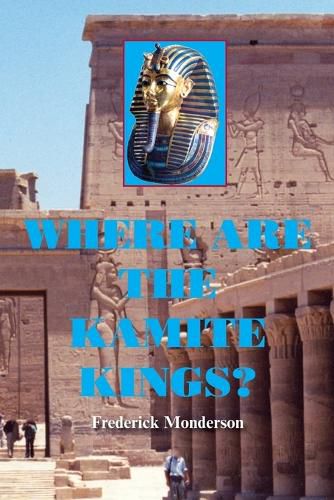Where are the Kamite Kings?
Frederick Monderson

Where are the Kamite Kings?
Frederick Monderson
WHERE ARE THE KAMITE KINGSHave you ever wondered ‘Where are the Kamite Kings?’ and ‘Where have they left evidence of their existence?’ Are you in need of a Short History of Ancient Egypt from the Prehistoric to Late Periods? If perhaps you have been to Egypt before, can photographic images help remind you of the wonderful sites you encountered on that memorable outing? If not, can these photographs entice you to hurriedly go on that visit? Where are the Kamite Kings? is written within the context of exploring locations across the historical landscape where respective kings have left evidence of their names. Though time and man have destroyed much, sufficient remains still permit painting a cohesive history of Egypt. The Table of Contents reads: Introduction; Predynastic Kemet/Egypt; The Archaic Period I; The Archaic Period II; Methodology I; Methodology II; The Old Kingdom; The First Intermediate Period; Science; The Middle Kingdom; New Kingdom: Politics, Priesthood, Culture and Architecture; The New Kingdom and the Eighteenth Dynasty; The Nineteenth Dynasty; The Great Temple of Karnak; The Temple of Luxor; The Ramesseum of Rameses II; Medinet Habu Temple of Rameses III; The Tomb of Seti I; The Tomb of Rekhmara; and The Ethiopian Ascendency. Thus, beginning in the Prehistoric Badarian, Amratian and Gerzean or Naqada I and II culture sequence, kings from Narmer to the Ethiopians have been identified in graphics and images. Places where kings’ names have survived in civil areas, religious and mortuary structures, on papyri, etc., have been pointed out. First and foremost, the author holds, the rise of civilization in Egypt is traceable to antecedents in Upper Egypt and Nubia/Ethiopia/Central Africa from which the Nile’s cultural effluence flowed. Second, and equally interesting, the author recognizes the potency of names and naming. Modern 19th Century scholarship on Egypt emphasized Graeco-Roman names, as for example, Egypt for Kemet; Cheops, Chephren and Mycerenius for Khufu, Khafre, and Menkaure; Diospolis Parva and Thebes for Waset; Amenophis for Amenhotep; and Tuthmosis for Thutmose; such was a skillful attempt in the overall conspiracy to move Egypt out of Africa and Africans out of Egypt.Since the present work ends with the Ethiopians, Graeco-Roman names are not apropos, except where reference is made to such temples as Isis, Edfu, Kom Ombo, Esneh, etc. Still, photographs, plans and illustrations are included, enhancing the visual image of the wide diversity of the culture, created by these Kamite Kings. Therefore, in answer to the title, ‘Where are the Kamite Kings?’, this work provides some of the answers while recognizing a whole lot more could have been included, since much of the culture’s artifacts are dispersed globally. Thus, brevity dictates this effort be confined to the physical borders of Egypt, though reference is made to foreign places and collections where Kamite or Egyptian artifacts are held. This work could therefore be useful to the general reader, student and expert [email protected] [email protected] [email protected] [email protected]
This item is not currently in-stock. It can be ordered online and is expected to ship in approx 2 weeks
Our stock data is updated periodically, and availability may change throughout the day for in-demand items. Please call the relevant shop for the most current stock information. Prices are subject to change without notice.
Sign in or become a Readings Member to add this title to a wishlist.


